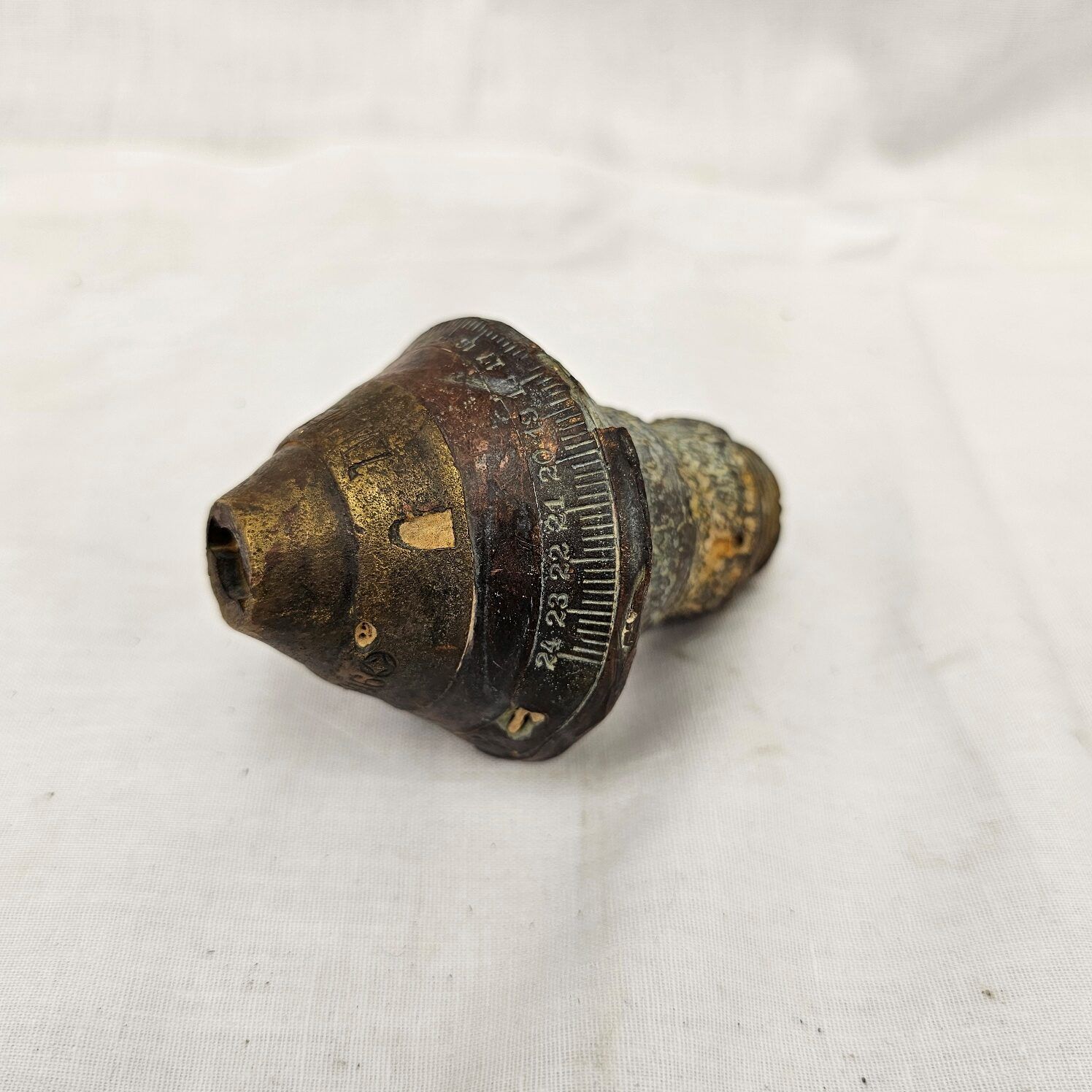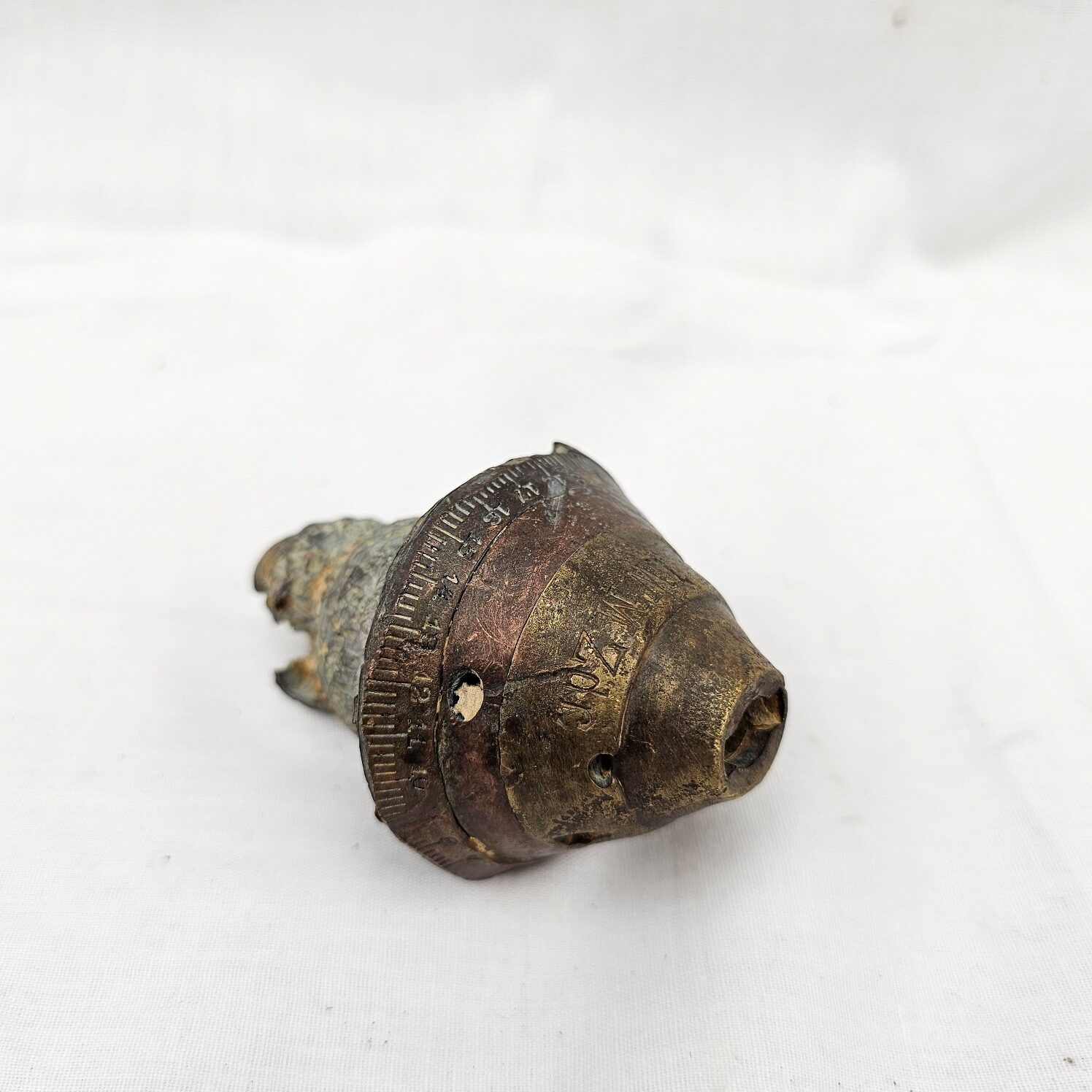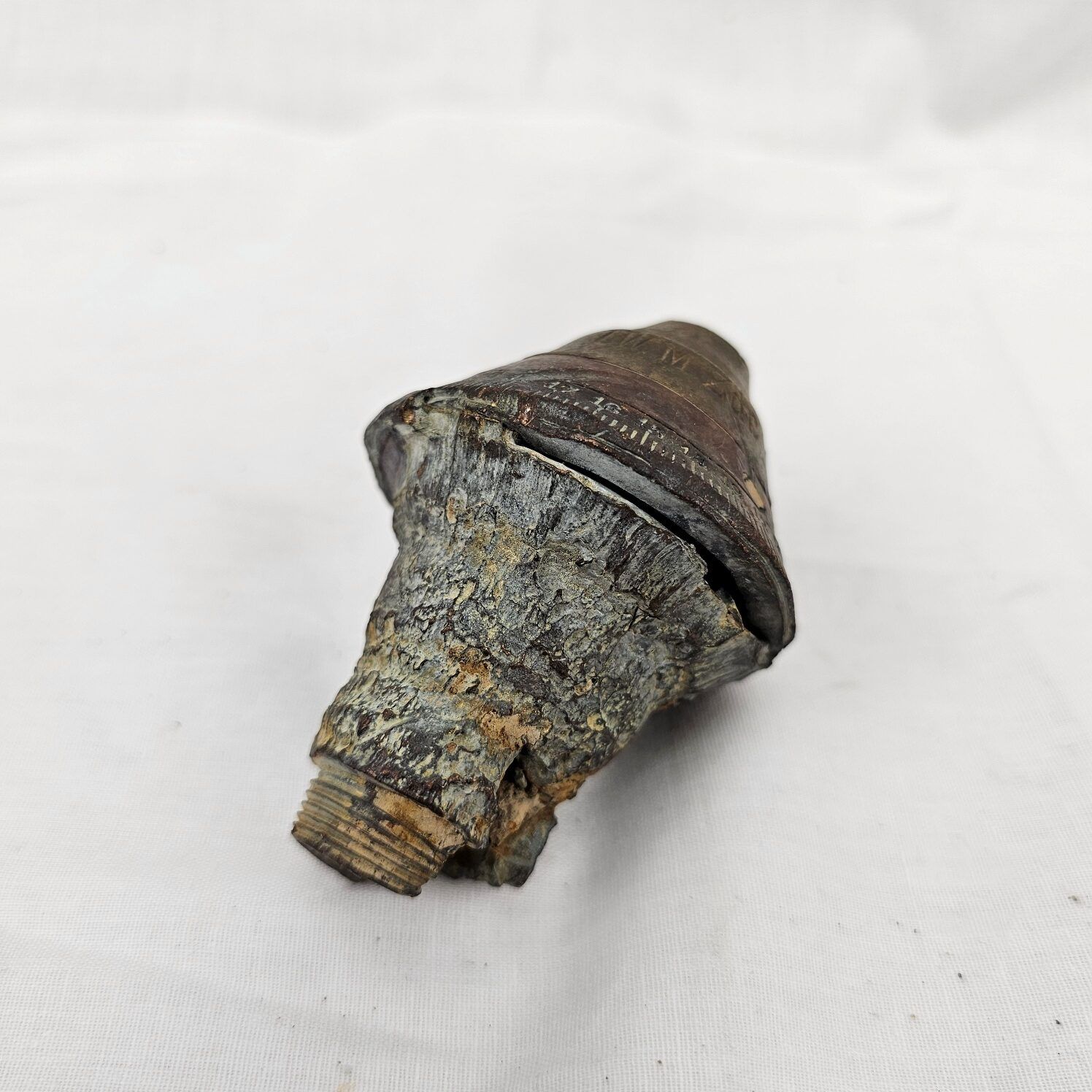~ WWI German Dated 1916 LWM.Zdr2 Light Trench Mortar Brass Fuse ~
The LWM.Zdr2 (Leichte Wurfmine Zünder 2) fuse was a German-designed fuze intended for use with light trench mortars during World War I. As the name suggests, “Leichte Wurfmine” translates to “light throwing mine,” indicating its use with munitions that were lighter and typically deployed for close-range support in trench warfare. The “Zünder 2” part of the designation identifies it as the second type of fuze designed for this purpose. Made primarily of brass, a common material for fuzes and munitions due to its durability and resistance to corrosion, the LWM.Zdr2 played a crucial role in the effectiveness of German light trench mortars. Here’s an overview of its functionality and impact:
Design and Features
Material: The use of brass for the LWM.Zdr2 fuze contributed to its reliability under the harsh conditions of trench warfare. Brass, being resistant to corrosion and relatively easy to machine, was an ideal material for the precise components required in fuze mechanisms.
Functionality: This fuze was specifically designed for light trench mortars, which were used to lob explosive charges into enemy trenches or against fortifications at relatively short distances. The fuze ensured that these charges would detonate upon impact or after a brief delay, depending on the tactical needs.
Simplicity and Efficiency: Given the close-quarters nature of trench warfare and the need for rapid deployment of supporting fire, the LWM.Zdr2 fuze was likely designed for simplicity and efficiency, allowing for quick adjustments and straightforward operation by the mortar crews.
Operational Use
Trench Warfare: The LWM.Zdr2 fuze and the munitions it was attached to were integral to the German army’s trench warfare strategy. Light trench mortars provided a means to deliver explosive ordnance over short distances, beyond grenade-throwing range but without the need for larger, more cumbersome artillery.
Supporting Infantry Actions: These mortars, equipped with the LWM.Zdr2 fuze, were used to clear enemy trenches, destroy barbed wire obstacles, and suppress enemy machine gun nests, supporting infantry advances or defending against enemy attacks.
Tactical Advantages
Rapid Deployment: The light mortar could be quickly set up and operated by a small crew, making it highly responsive to the dynamic conditions of trench warfare.
Versatility: The ability to adjust the timing of the fuze allowed mortar crews to optimize the effect of each round, whether for direct impact or air bursts, enhancing the versatility of light trench mortars in combat situations.
Legacy
Innovation in Ordnance: The development of fuzes like the LWM.Zdr2 reflects the broader innovation in ordnance technology during World War I, as combatants sought more effective ways to break the deadlock of trench warfare.
Influence on Future Designs: The experiences gained and lessons learned from the use of the LWM.Zdr2 and similar fuzes influenced subsequent developments in munitions technology, contributing to the evolution of indirect fire support tactics.
The LWM.Zdr2 fuze represents a specific adaptation of munitions technology to the tactical demands of World War I trench warfare, showcasing the ingenuity and adaptability of ordnance designers in response to the challenges of modern combat.









